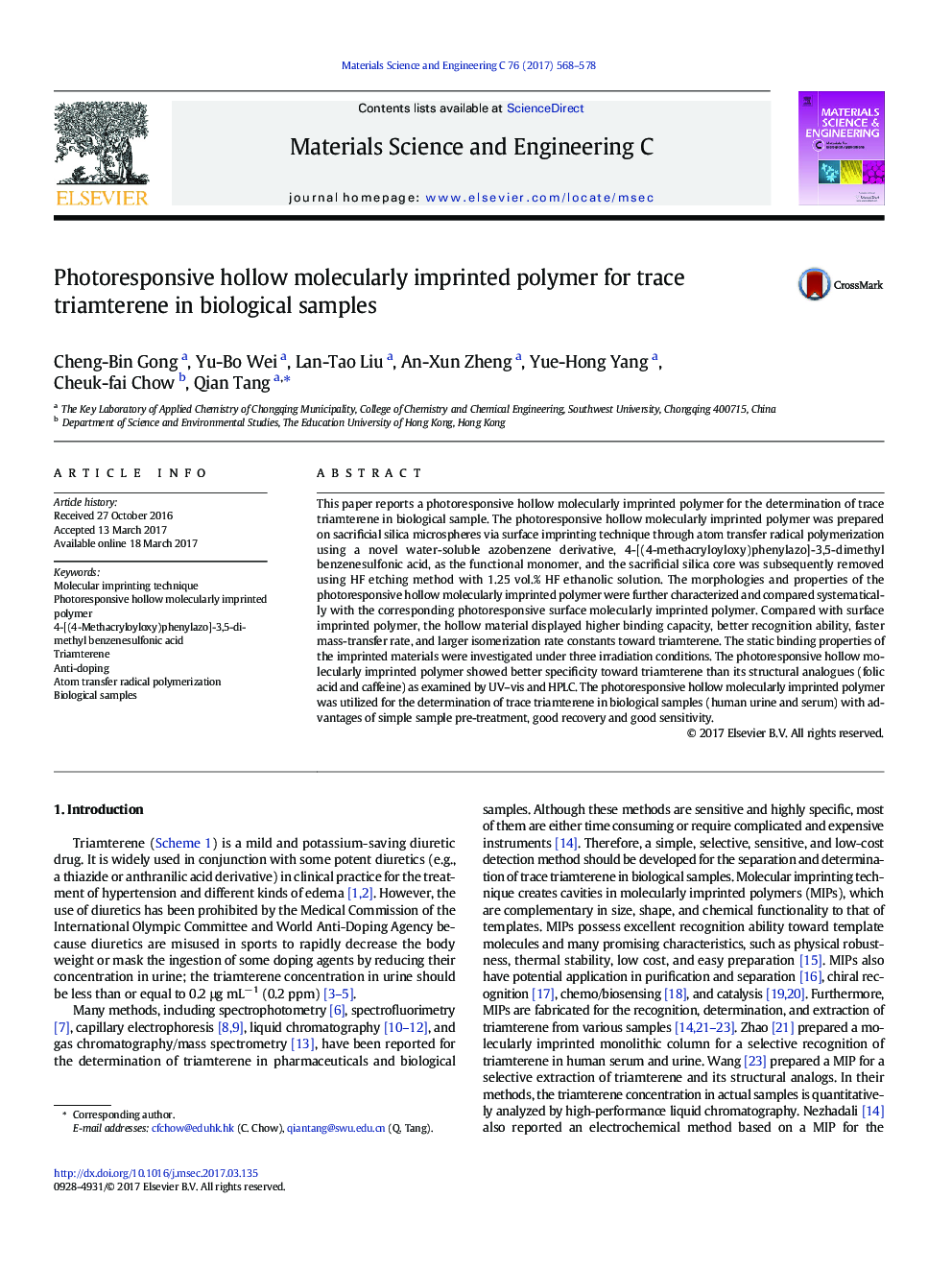| Article ID | Journal | Published Year | Pages | File Type |
|---|---|---|---|---|
| 5435150 | Materials Science and Engineering: C | 2017 | 11 Pages |
â¢A novel water-soluble azobenzene derivative MAPADSA was synthesized.â¢A photoresponsive SMIP was fabricated on sacrificial silica microspheres.â¢A photoresponsive hollow MIP was obtained after removal of the silica core.â¢Photoresponsive hollow MIP displayed better properties than photoresponsive SMIP.â¢PHMIP was used to determine trace triamterene in biological samples (LOD: 0.1 ppm).
This paper reports a photoresponsive hollow molecularly imprinted polymer for the determination of trace triamterene in biological sample. The photoresponsive hollow molecularly imprinted polymer was prepared on sacrificial silica microspheres via surface imprinting technique through atom transfer radical polymerization using a novel water-soluble azobenzene derivative, 4-[(4-methacryloyloxy)phenylazo]-3,5-dimethyl benzenesulfonic acid, as the functional monomer, and the sacrificial silica core was subsequently removed using HF etching method with 1.25Â vol.% HF ethanolic solution. The morphologies and properties of the photoresponsive hollow molecularly imprinted polymer were further characterized and compared systematically with the corresponding photoresponsive surface molecularly imprinted polymer. Compared with surface imprinted polymer, the hollow material displayed higher binding capacity, better recognition ability, faster mass-transfer rate, and larger isomerization rate constants toward triamterene. The static binding properties of the imprinted materials were investigated under three irradiation conditions. The photoresponsive hollow molecularly imprinted polymer showed better specificity toward triamterene than its structural analogues (folic acid and caffeine) as examined by UV-vis and HPLC. The photoresponsive hollow molecularly imprinted polymer was utilized for the determination of trace triamterene in biological samples (human urine and serum) with advantages of simple sample pre-treatment, good recovery and good sensitivity.
Graphical abstractDownload high-res image (303KB)Download full-size image
